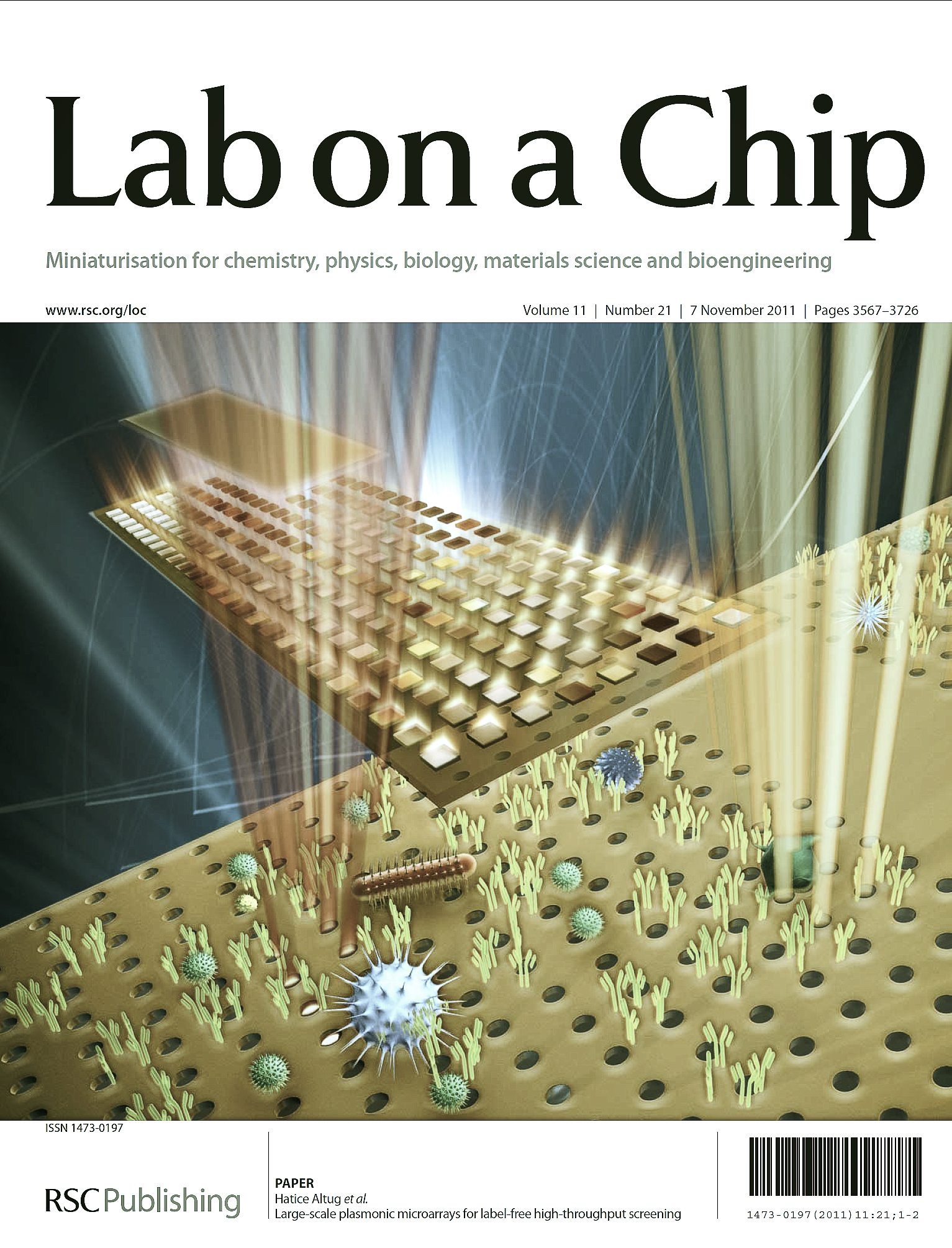Biosensing Technologies
Solutions for Global Health Challenges..
POWER-FREE MOLECULAR DIAGNOSIS
One of the toughest challenges facing the developing world is the lack of sensitive yet point-of-care diagnostic technologies. Keeping in mind that electricity could be a luxury in some parts of the world and the human eye is the most portable light sensor, we have recently introduced a novel approach based on strongly dispersive Fano resonances created at plasmonic meta-material surfaces for label-free detection of biomarker proteins “with the naked eye”. We are currently combining pre-sample concentration, multiplexed detection, and direct-eye detection approaches to achieve truly portable platforms suitable for point-of-care diagnostics. We are aiming to bring the simplicity of lateral-flow strip tests to limited-resource settings in an ultra-sensitive package. We are particularly interested in parasitic diseases which affect more than one billion people in the developing world stretching from South America to Africa and South Asia.
"Seeing protein monolayers with naked eye through plasmonic Fano resonances" Yanik et al, PNAS 108 (29), 11784-11789 (2011)
"Large-scale plasmonic microarrays for label-free high-throughput screening" TY Chang, et al., Lab on a Chip 11 (21), 3596-3602 (2011)
Optofluidic BIONEMS
Optofluidic nano-biosensing technologies has momentous implications in disease diagnostics and life-sciences. The strong light-matter interactions created on nanophotonic surfaces offer device sensitivities at single-molecule levels. Remote transduction capability of photonic sensors allow real-time measurements to be performed in biological samples. To address key challenges in molecular transport limitation in microfluidic channels, we are developing integration of nano/micro-fluidic networks with nanophotonic technologies and electronic/mechanical components for the development of Optofluidic BioNEMS. Advancements in this field require a solid understanding of the physical laws governing the soft /hard materials and fluids from a few nanometers to hundreds of micrometers. Our interdisciplinary approach puts us in a unique position to combine concepts and techniques from multiple disciplines for the development of transformative technologies.
VIRAL/BACTERIAL Pathogen Detection
Fast, sensitive, and portable viral/bacterial pathogen detection techniques are essential in preventing and confining emerging infectious diseases. We have recently introduced a nanoplasmonic metamaterial biosensor that can directly detects whole pathogens in biological samples at clinically low concentrations with minimal sample preparation. Due to the similarity of the clinical symptoms at the onset of some diseases, another critical aspect of infectious disease detection is the multiplexing capabilities for screening multiple possible viral infections simultaneously.
Nanoplasmonic biosensors are particularly promising since they allow normal excitation of surface plasmons in a microarray format with individual sensor dimensions down to 6 µm × 6 µm (about the size of a red blood cell). Recently, I have invented a dual-color imaging method for integration of more than one million sensors on a cover glass slide. We are currently integrating our technology with conventional microarray spotters and scanners and for the high-throughput analysis of pathogen or small molecule interactions using lens-free on-chip microscopy and imaging techniques. In addition to viral/bacterial disease diagnostics (HIV and TB), we are studying drug molecule and virus interactions in real-time.
Nanostructure Introduces Artifacts in Quantitative Immunofluorescence by Influencing Fluorophore Intensity" Chapman et al. Nature Group Scientific Reports 7 (1), 427 (2017)
"An Optofluidic-nanoplasmonic biosensor for direct detection of live viruses from biological media" Yanik et al, Nano letters 10 (12), 4962 (2010)
"Fano-resonant asymmetric metamaterials for ultrasensitive spectroscopy and identification of molecular monolayer" Wu et al, Nature Materials 11 (1), 69-75 (2011)



